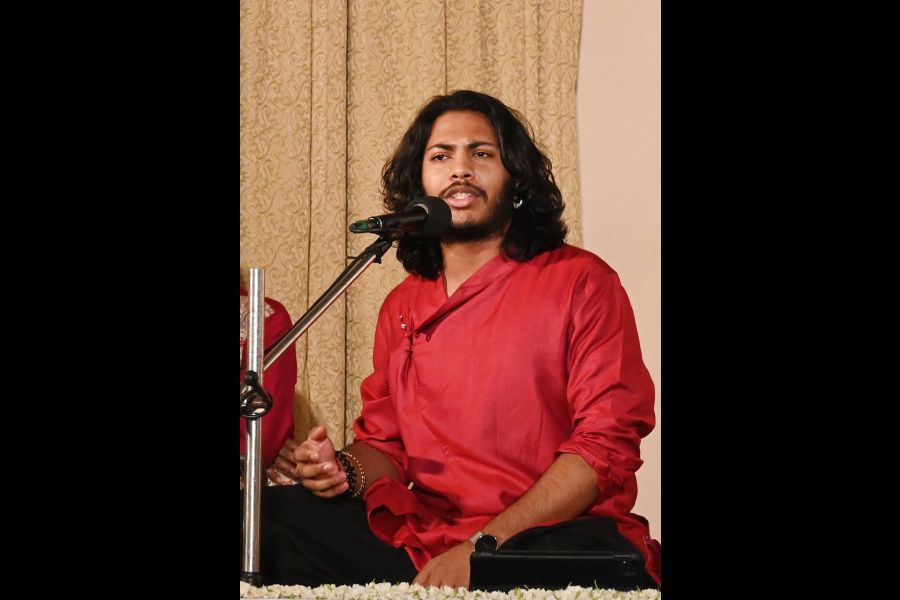He was quite young when music connoisseurs in Calcutta first heard his voice as vocal support for his father, the late Ustad Rashid Khan. In the last few years, though, Armaan Khan has emerged as a rightful heir of the Rampur-Sahaswan gharana, a student of an all-time great vocalist, and the son of an extraordinary musician, carrying a huge burden of expectations on his shoulders. He took on the challenge with gumption and proved himself to be a bright future star at the soirée following the Ananda Purashkar at The Oberoi Grand. The literary evening celebrated the uniqueness of the book, Nakshalbarinama, authored by Ashim Chattopadhyay, which was chosen for the previous Bengali year’s (1430) Ananda Purashkar.
Armaan established his own identity as well as incorporated the legacy of his father’s signature style. He even went beyond the boundaries of Indian classical music, stepping out of his comfort zone. Armaan embellished the programme with his beautiful rendition of three exceptional Tagore songs, reminding the audience of his father who had graced the same stage with some marvellous improvisations a few years ago. The young artist was well aware of the pressure of expectations on him but was able to showcase his rigorous training and versatility successfully.
His first choice was “Antare jagichho antarjami” based on Raga Behaag and set to jhamptaal. This is a Brahmasangeet composed by Rabindranath Tagore at the age of 32 and was inspired by “Kaun jogi bhayo”, according to research by Indira Devi Chaudhurani. Armaan started with a wonderful, slow-paced aaochar — a perfect evening melody — before entering the actual composition. He also took the liberty
of enhancing the raga with an amalgamation of a vistaar and a taan after the antara. The singer added
a rare dimension to the song by dwelling for long on a standing
note and then gently turning the song towards its conclusion, mesmerising the audience.
Armaan’s next presentation was “Jogi hey, ke tumi hridiashone”, which was composed in the structure of Raga Kedar in ektaal. Although it is from one of Tagore’s dramas, Prakritir Pratishodh, this dhrupad-ang song has an independent charm and Armaan expressed its hidden magic with his improvisations in the raga. Unlike the other compositions by Tagore in Kedar, this song is ideal for a free soul and Armaan used this quality intelligently with some unique movements of the keynotes. The song also does not follow the distinctive formation of the raga, which was emphasised by the artist in the movements in the middle and upper octaves.
The concluding song, “O keno bhalobasha janate ashey”, was a pleasant surprise in Raga Piloo. Armaan was fully absorbed in the playfulness of this khemta-ang song composed by Tagore at the young age of 22. The piece has a mellifluous variety of notes and Armaan overwhelmed the audience with his creativity and spontaneous expertise, playing with the shudhh and komal notes. The artist intensified the generosity of the raga with his depth, feeling and command over its core structure. He was extraordinarily melodious and faithful to the khemta style and left the audience thirsting for more.
Biplob Mondol was perfect and innovative on the tabla and Aparajita Chakraborty enhanced the ragas with the smoothness of her esraj. Armaan, the shining star of the evening, was mature in his rendition of these Tagore songs that were composed by the poet in his early twenties and thirties and which reveal his fascination for Indian
classical music.










